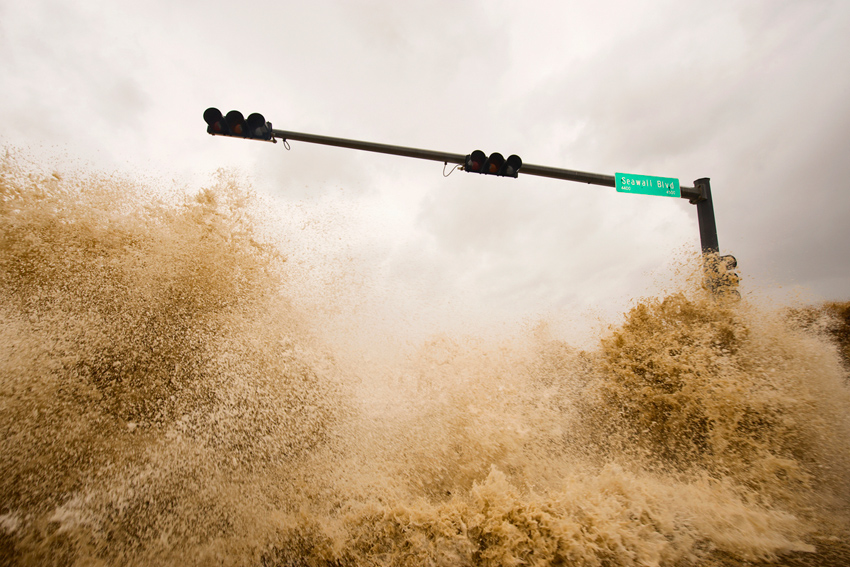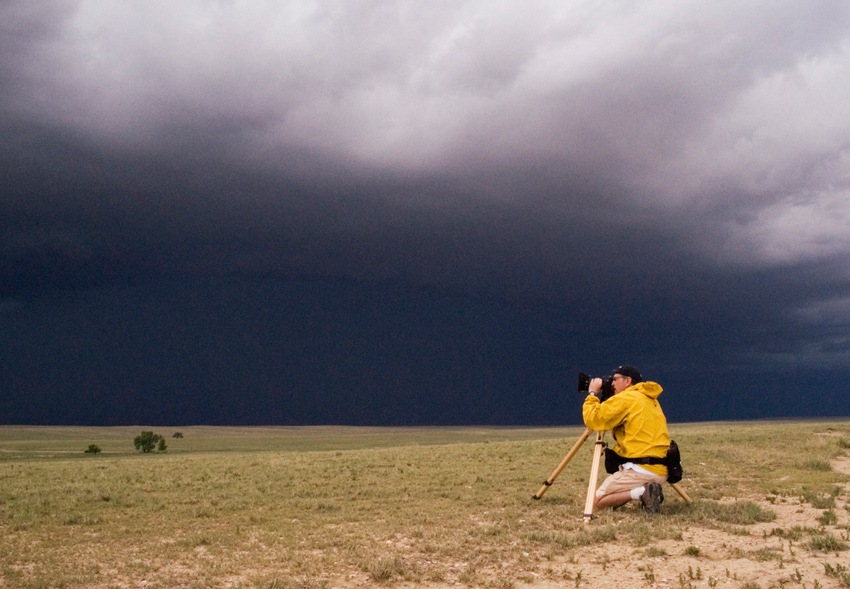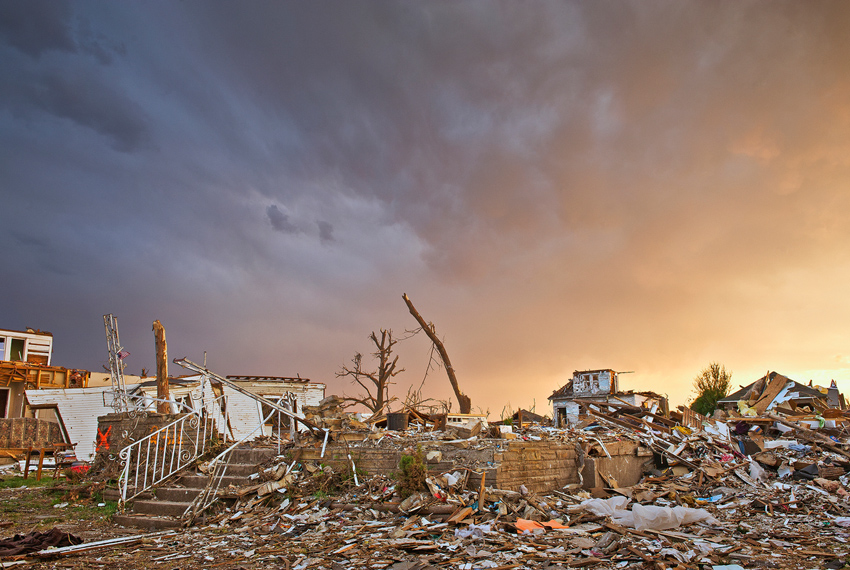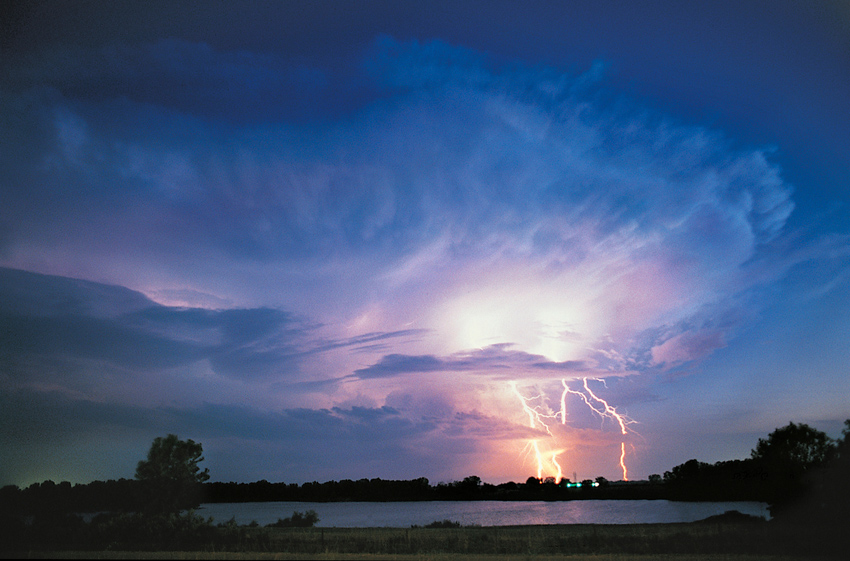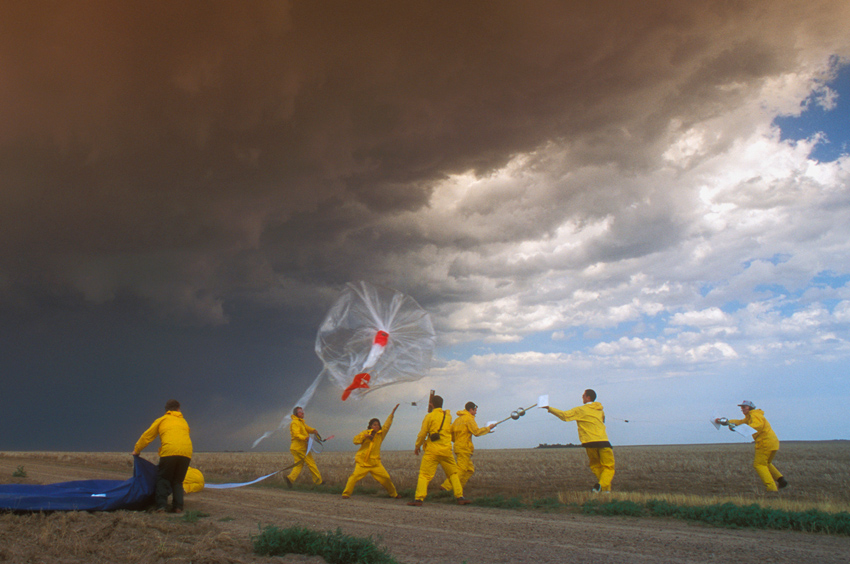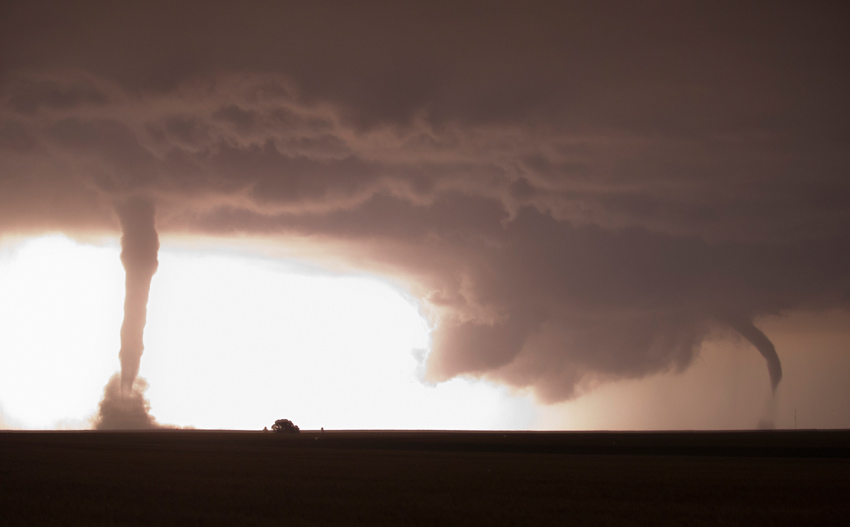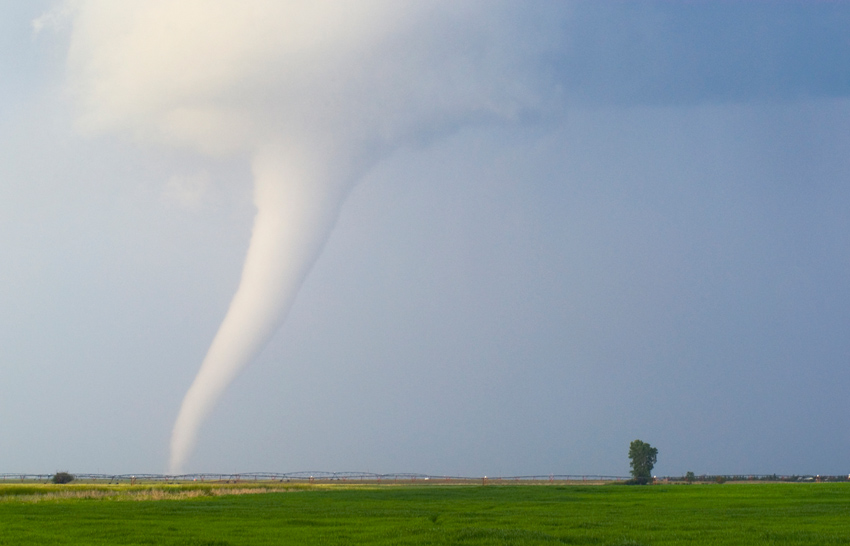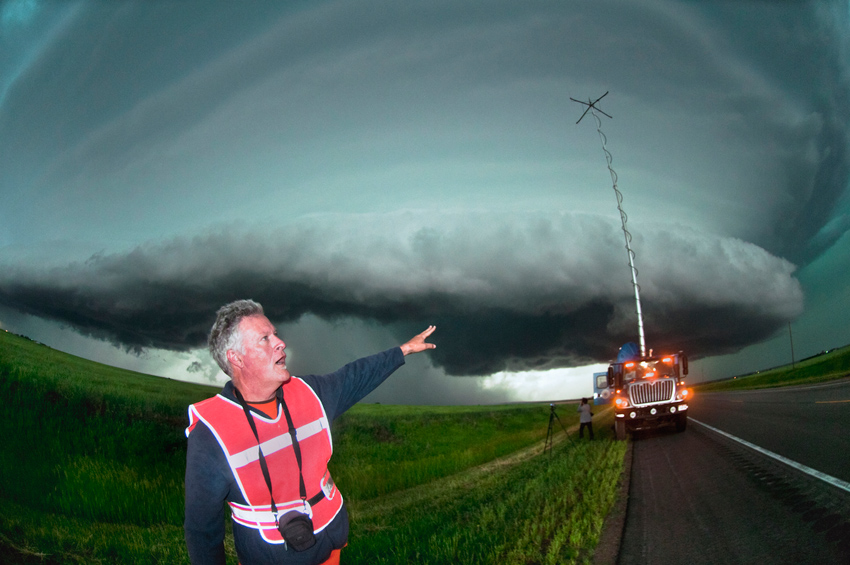
A drop of rain is enough to ruin some people’s day, but when your work is constantly being disrupted by weather, you begin to wonder if Mother Nature has a bull’s eye stamped on your back.
“I was looking up in the sky one day, ready to shoot, and it started raining,” recalls Jim Reed, who, in the 1980s, was a young filmmaker and writer working on various TV and movie projects in Los Angeles. “It was getting so expensive and frustrating,” he laments, referring to the money lost when you have to stop production.
Eventually, after being hampered by enough profit-draining bad weather, it dawned on him that maybe Mother Nature indeed was trying to tell him something: Weather was not working against him, it was calling him. That’s when he decided to switch gears and became one of the pioneers in weather photography. Now based in Wichita, Kansas – the epicenter of Tornado Alley – Reed is one of the most recognizable photographers and authors in this unique craft, having documented storms for more than 20 years.
“I had the right idea of looking through the viewfinder,” Reed said about his work behind the camera. “I just wasn’t looking at the right subject.”
There’s a certain energy associated with these experiences.
“I was fascinated by weather, but it was creativity that was my main interest.”
That led Reed to pursue filmmaking at the University of Southern California in Los Angeles. A successful career as a Hollywood filmmaker and writer followed. While creating commercials and music videos and writing screenplays for movies and television, Reed found himself always drawn back to weather. It seems Camille left a bigger impact than Reed had initially thought.
“When you are young, any phenomenon really sticks with you. There’s a certain energy associated with these experiences.”

When Reed finally experienced that “ah ha” moment – that he could marry both his creative passion and fascination with extreme weather – Reed turned his attention to writing about storm chasing, lightning, and other stories about climate toward the latter part of his writing career in L.A. He soon went out into the field and, in addition to writing, the editors he was working for asked if he would also photograph the storms. “That was the final leap into becoming foremost a photographer.”
For Reed, it was a lot of trial and error at the beginning. “In the early days, there was no instruction manual for what we were doing.” Since then, he has followed countless storms, from lightning to tornados to hurricanes (19 and counting). He narrowly escaped hurricane Charley in 2004, when it ambushed him out of nowhere. Reed prefers to work independently and pick the storm he wants to track and photograph, although he is sometimes commissioned by various organizations and news agencies. “This was especially true during the 2002 hurricane season, when things were getting highly unusual.” In that season, 20th Century Fox hired Reed to lead a special effects crew into hurricanes Isidore and Lili (one of the deadliest of that year) to capture footage for the film, “The Day After Tomorrow.” “That was one of the most satisfying projects, a successful mission,” Reed recalls.
From foldout map to GPS, technology makes life easier
There’s nothing simple about storm chasing, but one thing that has improved Reed’s weather tracking is the advancements in technology.
“In 2013, technology has never been more user friendly. When I started, I had a foldout map and battery operated radio. You got some information and head out, and then got on a pay phone to call the National Weather Service for more info. Now, with a smartphone you can get all that info inside your vehicle.”

“I did not jump on the digital bandwagon right away. Then I saw some (digital) pictures of lightning, and I was very impressed. (With film) lightning is one of the toughest things to shoot. It constantly changes in temperature and exposure.” With an instantaneous DSLR, Reed can see if a lightning shot is great or if a blown-out photo needs exposure adjustment.
“I carry typically one or two camera bodies. I first tried a Nikon camera body and stayed with Nikon ever since. I only had two bodies quit on me, and that was from saltwater of a hurricane. I believe in good karma: If something is working for you, be careful of bringing in something new cause that might change the pace.”
That type of dedication caught Nikon’s attention, naturally. In early 2008, Nikon flew two engineers from Tokyo to Wichita with what was then a preproduction model of the D700 DSLR, and gave Reed a first crack at it under secrecy. It was as if “Nature knew I was doing this and decided to put on a show: multiple tornadoes and multiple lightning ops. The camera did a great job and was easy to use.”
As for his shooting style: “My first love is art: unusual color, texture, fascinating shape. If all these elements come together I need to decide how I’m going to record what I’ve been given – shoot at a low angle up close or stay back with a telephoto lens, or use graphic lines to pull you into the storm. I always try to shoot on tripod when I can.”
Get a weather radio, or weather app, be proactive – there’s no excuse for being caught off guard …
For those who are thinking about getting into his type of work, Reed suggests they think hard before running off to chase and photograph the next storm.
“It’s such a niche. If you are talking about earning a living from it, it’s tough. Because I’m a writer and photographer who was at the right place at the right time, I was able to do that. I encourage young people today to research about climate. Do your homework: Find out what the hiring trends are in respect to photographers. Are we having more magazines or newspapers, or are they being cut? Have realistic expectations when it comes to photography. As the climate continues to change, there might be more room for other professions, like meteorologists and researchers, or even lawyers specializing in weather.
Storm chasing to climate activism
Chasing extreme weather for 22 years has been rewarding for Reed, but it’s also taking a toll.
“This is a very physical activity. I’m 51 and fit, I go to the gym. But in November 2010 I got hit during a winter storm. This kid ‘t-boned’ me. It destroyed my 16-year-old Ford Explorer, which was being readied for a TV commercial. I was in and out of physical therapy for several months, and I’m still feeling it. It forced me to change the way I shoot.”
But having tracked the changing weather patterns and amassed all that knowledge – as well as seeing first-hand how destructive Mother Nature can be – Reed is now using his experience to educate, getting on the policy side of things and sharing his expertise with government agencies. From his perspective, the climate changes are only going to become more powerful. Some of the climate changes he’s concerned about now include droughts in various parts of the country and dangerous weather impacting outdoor events like sports and concerts.

“It’s important to pay attention and be prepared. I tell people what I’ve witnessed as a result of 22 consecutive years in the field: weather challenges are increasing, many storms are larger and have more energy associated with them. A big storm comes along and there’s a lot of exciting news coverage, but it lasts only a certain period and that goes away and the country goes back to what it was doing in the first place. These events go on for years.
“I’m archiving 20 years of photographs and video and hope to find an effective method for bringing this to the public. I’m hoping it will entertain and inspire people. We need to take personal responsibility and adapt.”
Reed says, thanks to technology, there’s no reason why any of us can’t be prepared. “Get a weather radio, or weather app, be proactive – there’s no excuse for being caught off guard, except for simply being inattentive or lazy.”
Jim Reed will be conducting his first in-the-field photography workshop, May 1-12, 2013. “It’s a great opportunity to teach folks about severe weather forecasting and preparedness, as well as how to safely photograph spectacular storms,” Reed said. You can follow him on Twitter or his website.
(Copyright images via Jim Reed; photos of Reed by Katelyn Pfeister, Carlton Ward Jr., and Katherine Bay)
